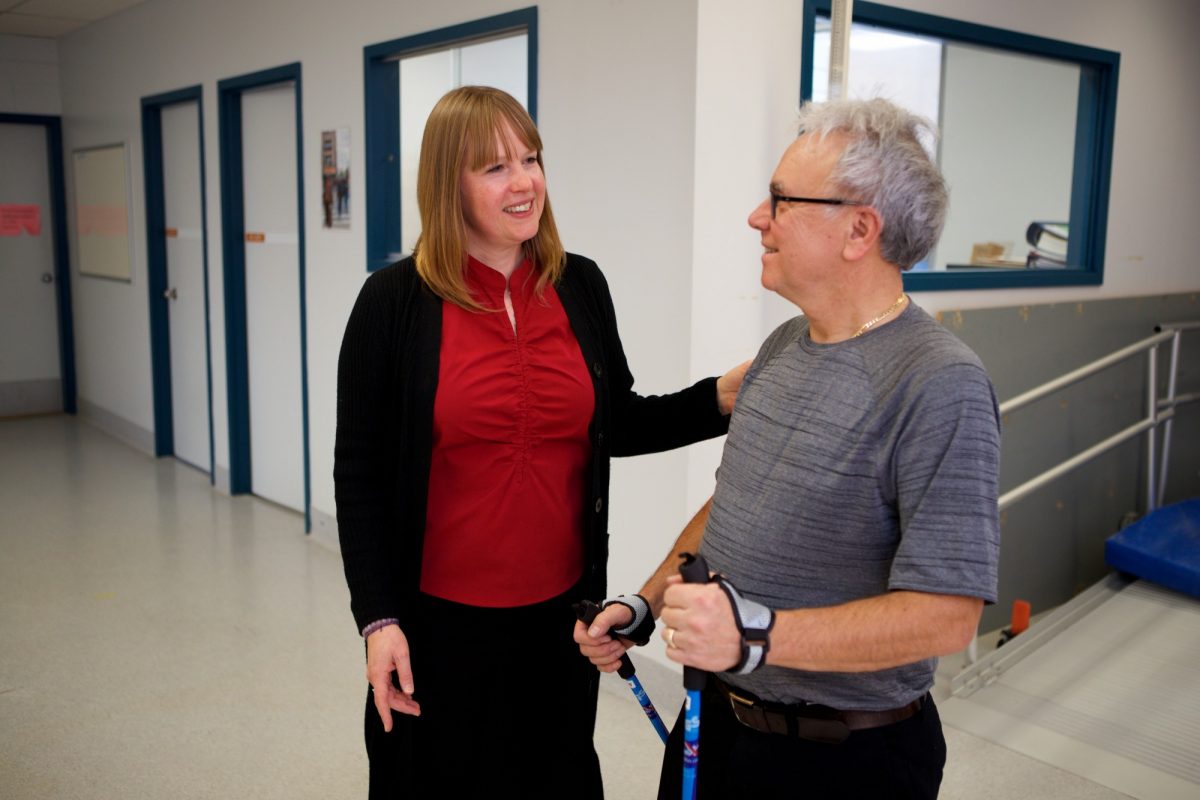
Dr. Ruth Barclay's walking workshops included the use of Nordic walking poles and other practical and informative topics.
Walking study shows older adults finding ways to be active in COVID lockdowns
Many older adults in Canada don’t regularly walk outdoors, despite limits to the activity impacting mobility, social isolation and other quality of life factors. In 2021, a year into the COVID-19 pandemic, the risks may be even higher than normal.
In 2020, Dr. Ruth Barclay, associate professor of physical therapy in the College of Rehabilitation Sciences, Rady Faculty of Health Sciences and Nancy Salbach, professor of physical therapy at the University of Toronto, were near the end of a two-year study that looked at ways to improve outdoor walking among older adults when the pandemic hit Canada.
Participants in the study, funded by the Canadian Institutes of Health Research, were randomly assigned to a walking workshop plus a 10-week outdoor walking program or the walking workshop plus 10 weekly phone call reminders. Follow-up assessments occurred at three, six and 12 months. Between the six- and 12-month assessments with the second group of participants, many had their walking routines interrupted by the pandemic.
This led to an unexpected sub-study, Barclay said. “We were able to amend the project and additionally ask people about their walking and physical activity experience during COVID. We wanted to know how they experienced physical activity during and after lockdown relative to prior to the pandemic.”
Without being able to continue with walking or other physical activities, some participants noted negative consequences, like weight gain, shortness of breath or weakness.
“It was a real sense of loss for people,” Barclay said.
The last assessments for the study were done in July 2020 and at that time, many participants were taking small steps to increase their physical activity, whether through online exercise videos or walking outside, either with a mask or at times of day when there was less foot traffic outside.
“Some participants said they’d still walk with a friend, but at a distance and with masks on,” she said. “With the weather getting nice again, I imagine it may be similar this year, depending on changes to restrictions.”
Barclay and Salbach’s study took place over two years at four universities – UM, the University of Toronto, McGill University and the University of Alberta – with 191 participants, all of whom were aged 65 and older and described themselves as having difficulties walking due to individual or environmental barriers. Some individual barriers included impaired balance or decreased motivation, while environmental barriers included the distance needed to walk to a desired location or time and speed required to walk across an intersection.
The walking workshops were led by a team of faculty, graduate students, physiotherapists and research assistants at each of the sites. In small groups, the participants took part in eight activity sessions in the five-hour workshops. The stations were both practical and informative and included topics like monitoring exercise intensity, walking with Nordic walking poles and correctly using a pedometer.
The project included five other sub-studies by faculty and graduate students at each of the participating universities. One of the key sub-studies, according to Barclay, was a look at cadence thresholds – or steps per minute – that was led by Dr. Sandra Webber, associate professor of physical therapy at the College of Rehabilitation Sciences.
The sub-study used accelerometry and GPS systems to determine when people were engaged in relatively sustained or purposeful walking.
“It can be difficult to make sense of step data when most episodes of walking in adults last less than 30-60 seconds and involve fewer than 40 continuous steps,” Webber said. “We were then able to use the technique to identify sustained purposeful walking that occurred during everyday life in our participants.”
“Hopefully in future, other researchers will be able to use that kind of analysis,” added Barclay.






